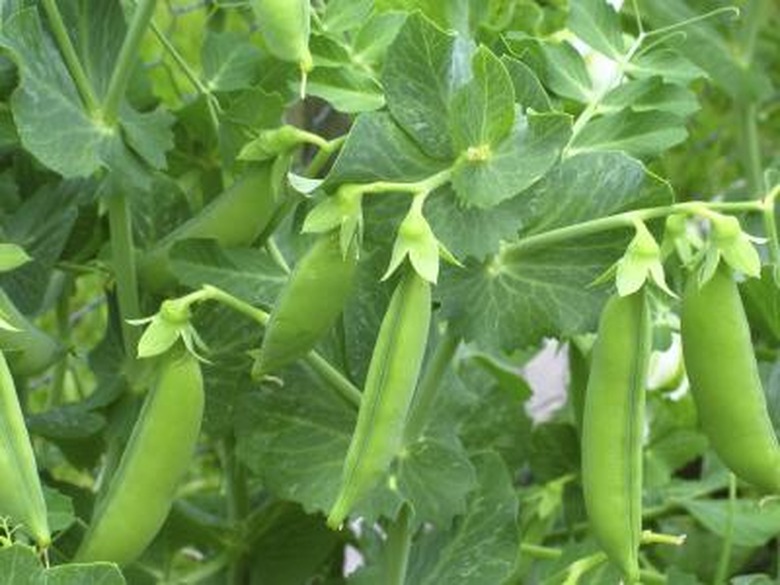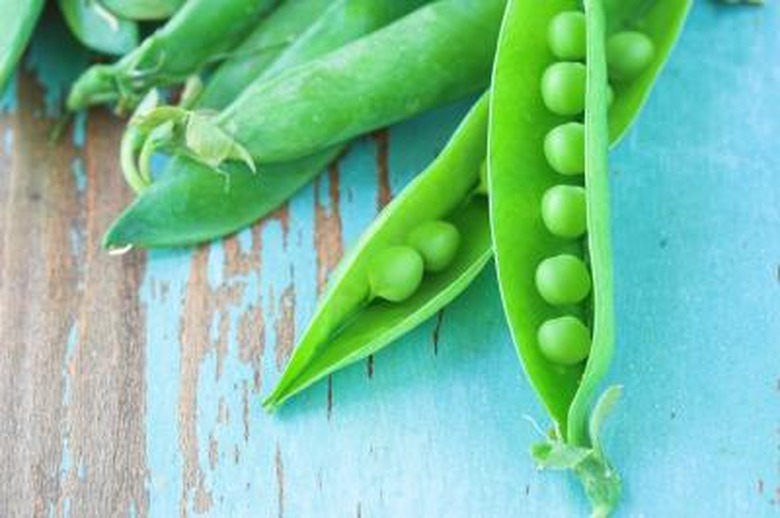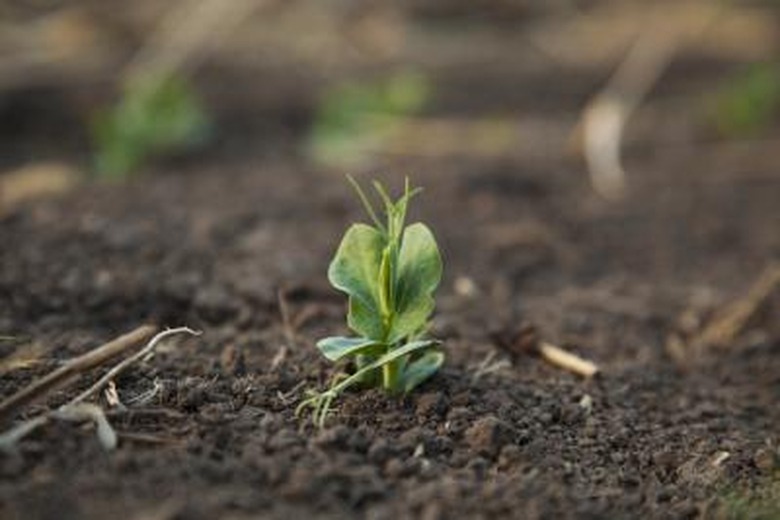Why Do Germinating Peas Undergo Cellular Respiration?
Peas are seeds, or embryonic plants. When they are exposed to the right conditions, the plant will emerge from the seed and begin to grow; this process is called germination. Cellular respiration is necessary for germination to occur.
Types
Types
Cells in pea plants need energy to synthesize proteins, replicate their DNA and divide, and maintain stable internal conditions. Without a source of energy, a cell would cease functioning, or die. Cells harvest energy from sugar and fat molecules through a series of reactions called cellular respiration. The energy extracted from the sugar is stored by using it to synthesize a molecule called adenosine triphosphate or ATP, which the cell can then use as a kind of "energy currency" for other processes.
Function
Function
During germination, a pea plant is growing, meaning its cells are actively dividing. The food stored in the seed provides the pea plant cells with the energy they need to maintain themselves and divide, since the plant is not yet capturing sunlight through photosynthesis. The pea plant cells depend on cellular respiration to furnish them with the energy they need to stay alive and grow.
Considerations
Considerations
Pea plant cells cannot remain alive without cellular respiration. The pea plant cells will continue to extract energy from sugar through cellular respiration even once the plant is fully grown; at that point, however, the sugar for cellular respiration will come from photosynthesis rather than the stored food that sustains the immature plant during germination.
References
- "Biology"; Neil Campbell, Jane Reece, Lisa Urry, Michael Cain, Steven Wasserman, Peter Minorsky, Robert Jackson; 2008
- Purdue University, Center for New Plants and Crop Products: Pisum Sativum
Cite This Article
MLA
Brennan, John. "Why Do Germinating Peas Undergo Cellular Respiration?" sciencing.com, https://www.sciencing.com/why-do-germinating-peas-undergo-cellular-respiration-13428002/. 21 July 2017.
APA
Brennan, John. (2017, July 21). Why Do Germinating Peas Undergo Cellular Respiration?. sciencing.com. Retrieved from https://www.sciencing.com/why-do-germinating-peas-undergo-cellular-respiration-13428002/
Chicago
Brennan, John. Why Do Germinating Peas Undergo Cellular Respiration? last modified March 24, 2022. https://www.sciencing.com/why-do-germinating-peas-undergo-cellular-respiration-13428002/



